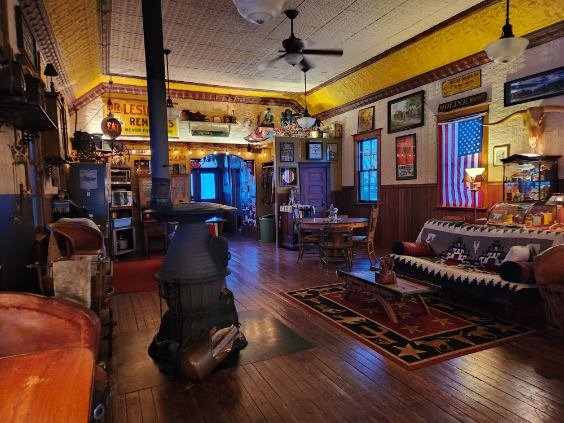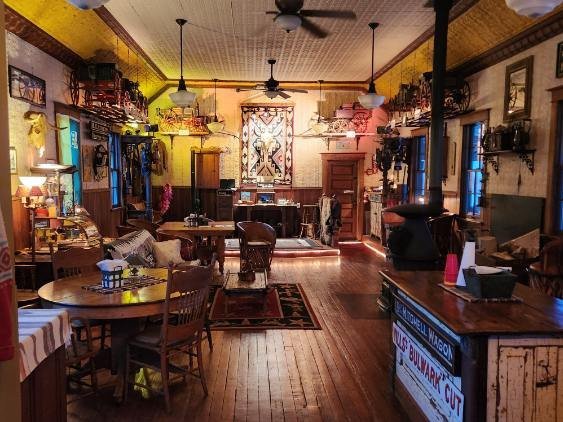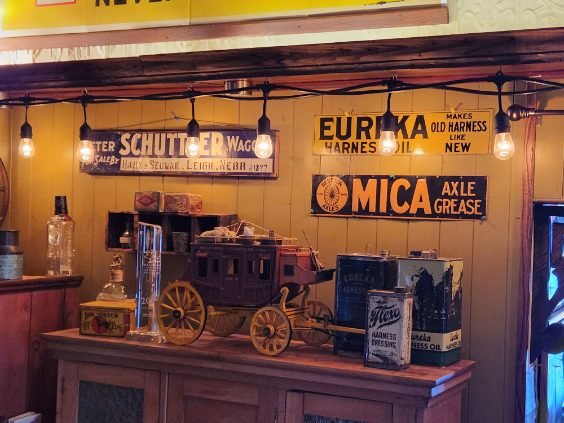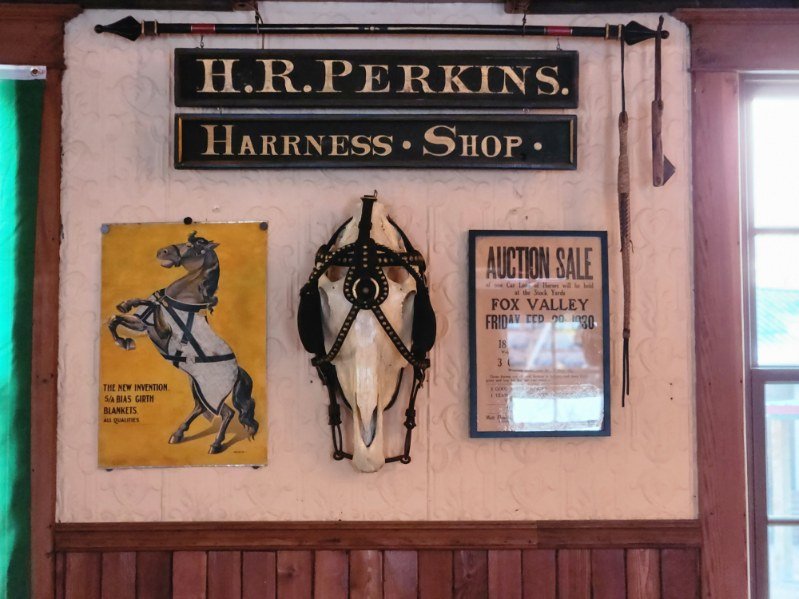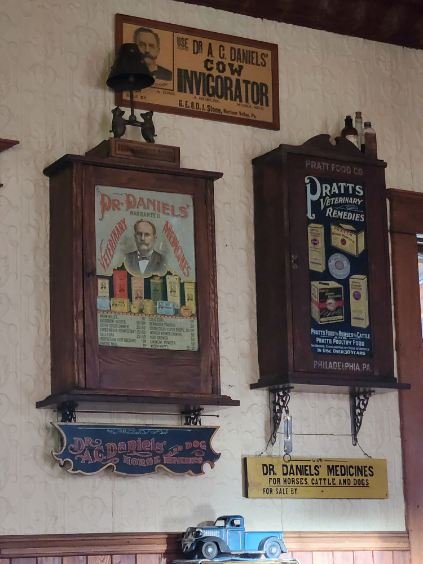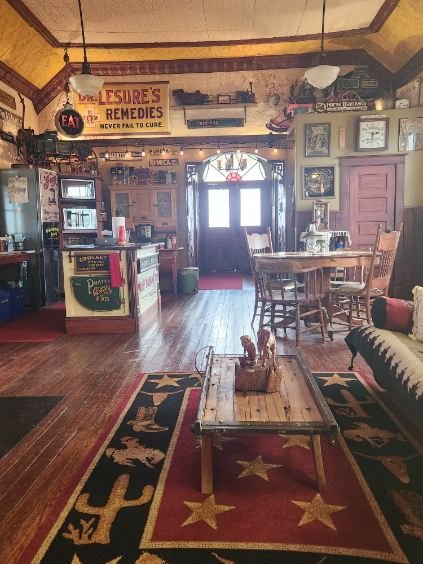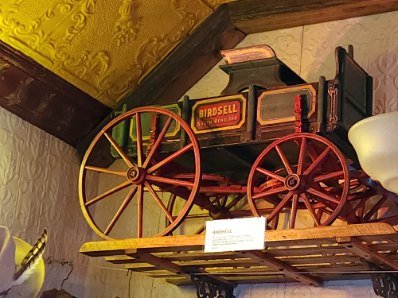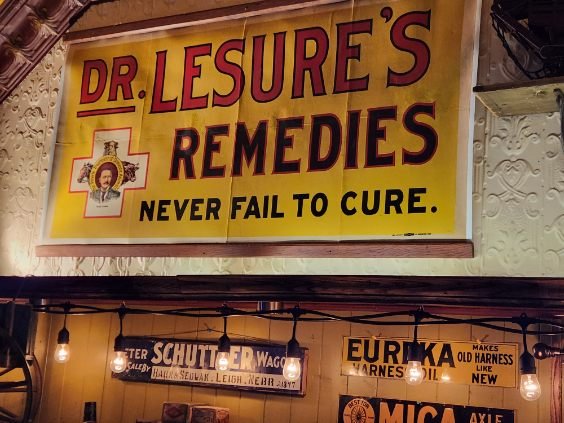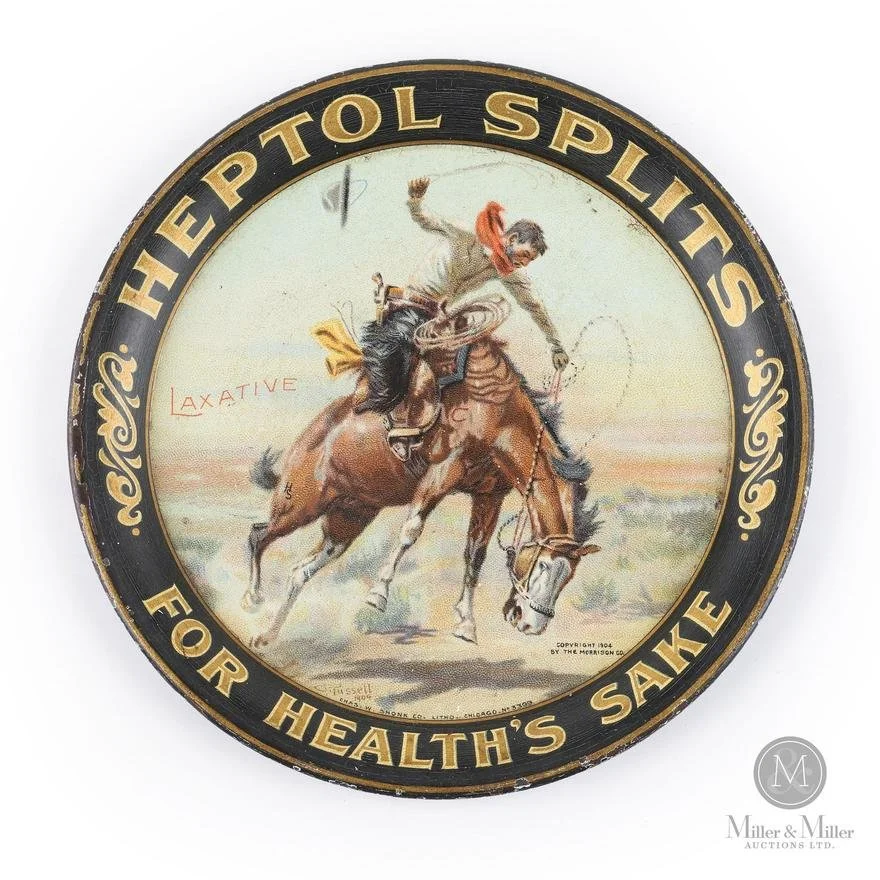The Collector Cowboy
…and his ghost town B&B
Television and movies allow us to immerse ourselves in worlds that briefly obliterate reality and provide for momentary escapism. Children and adults alike can imagine their futures as doctors, lawyers, detectives, even cowboys. For most, these worlds are mere fantasies, yet as colorful as if they were real.
But Greg Hisey is one of those rare people who actually got to live the dream. A fascinating man with a deep well of stories, he grew up on a ranch experiencing life without the boundaries of the nine-to-five daily grind.
Greg is the real deal – Stetson hat, denim, chaps and rugged good looks – a true-to-life cowboy with a smattering of celebrity.
Collector Greg Hisey is pictured with his Stetson hat, denim, and chaps.
The term ‘cowboy’ is rooted in post-Civil War U.S. history, a time during the mid-1800s when those who survived the war were looking for a new life. Some went to California where gold had been discovered. Others followed the economic upswing in the east, where beef began commanding high prices while cattle ran wild in Texas. Farmers devised a solution: hire young men to round them up then herd them to where the money was. Hence the term ‘cowboy’ was born.
Greg grew up in Nebraska, a midwestern state known for its prairies, ranches and the invention of ranch dressing (thanks to Nebraskan Steven Henson). Like most kids, Greg began working on farms and ranches when he was very young. By the time he became a teenager he was, in his words, “pretty admired as good help around horses, cattle and equipment”. With later moves to Montana, Alaska and eventually Maple Creek, Saskatchewan, Greg learned just about all there was to know about farming, harvesting and the general management of farm operations. He eventually went back to working as a cowboy for a large ranch in Montana, participating in rodeos, working as a tour guide, a stunt horse rider, an extra in a Busch beer commercial and notably as a stunt double for actor Jon Voight.
So how did he have time to become a collector – a breed unto itself and almost as thrilling as being a cowboy? As Miller & Miller Auctions can attest, collectors are an exciting, sometimes quirky bunch and dedicated to their collections. Despite what many think, collections are always thoughtfully assembled, albeit often with meaning only apparent to the collector. This is the mind of a collector and a cowboy alike. It’s in their blood.
Greg’s collecting started when he took up roots in Maple Creek, Saskatchewan. He began by restoring, building, buying and selling wagons, eventually finding two rare Montana sheep wagons, the germ of a project that would eventually become known as “Ghostown Blues”. He created a destination bed and breakfast, drawing visitors from around the world with its assembly of original converted wagons, homestead cabins and old trucks from Prairie ghost towns. They were abandoned, unwanted and sad looking items that appeared to ‘have the blues’, hence the name.
A peek inside the ‘church’ that Hisey moved, restored, and used as the meeting place for his B&B guests, and later, to display his collection. Many of the items in these photos are included in the April 13th auction.
Greg filled his little ghost town with hand-picked antiques all tracing back to the old west, many of which are now being offered in Miller & Miller’s April 13, 2024 sale, Advertising, Canadiana & Historic Objects.
The eclectic collection of farm-related early western transportation, veterinary medicine memorabilia, advertising and general store collectibles reflects not only history, but Greg’s own past, his loves and a life lived as a genuine cowboy.
Story by Christine Blaus
Some of the Greg Hisey Collection highlights in the upcoming Miller & Miller sale include:
Lot 8 - National Brewing Co. Change Tray
1910s. This highly sought Western cowboy-themed change tray features a horse in full exertion saddled with a less-exerted cowboy enjoying "the best [beer] in the West". National beer was the first lager beer brewed in San Francisco.
lot 9 - Heptol Splits Laxative Change Tray
1900s. This desirable change tray features the great Western image of a cowboy on a bucking bronco. The image is by Charles Marion Russell, 1904.
LOT 102 - Hickman-Ebbert Wagons Self-Framed Tin Sign
C. 1906. One of the great self-framed tin signs featuring the Hickman-Ebbert Wagon Company of Owensboro, Kentucky. Titled, "In the Shade of the Old Apple Tree". A stunning lithographic image from the golden age of advertising.
lot 118 - Dr. Lesure's Veterinary Remedies Broadside Banner
Pre 1906. A rare and possibly unique broadside banner featuring Dr. Lesure's Veterinary Remedies. The impressive Dr. Lesure's Red Cross Trademark is shown at the lower left quarter, with Dr. Lesure surrounded with horse, ram, and cow. This broadside pre-dates The Pure Food and Drug Act of 1906 which banned the use of "cure" in advertising.
LOT 315 - Dr. Lesure's Veterinary Remedies Store Display Cabinet
1900s. A wooden veterinary remedies store display cabinet for Dr. Lesure's Famous Remedies from Keene, New Hampshire. The tin lithograph panel depicts a horse in profuse detail peering out an oval stone opening. It is one of the "holy grails" in veterinary patent medicine collecting.
lot 186 - Dr. A. C. Daniels' Veterinary Hoof Dressing
Early 1900s. Lithographed soldered tin with rare and early cork-top spout. This is one of the rarest Dr. Daniels' remedies. Only a couple of examples of this variation are known.
LOT 213 - Original Paint Birdsell Goat Wagon
1900s. Goat wagons were made for farm utility, as well as entertainment for children. This wagon was built by South Bend Toy Co. where the Birdsell Wagon Company was located. Marked, "Birdsell South Bend, Ind.", side panel. Includes 2 original Birdsell Advertising postcards.
LOT 214 - Hanging Lighted "Eat" Diner Globe
1930s. An early lighted diner globe sign made with custom reverse-painted lenses in a repurposed gasoline pump globe body.
SALE INFORMATION:
Advertising, Canadiana & Historic Objects
Featuring the Greg Hisey Collection
April 13, 2024
9am EST



